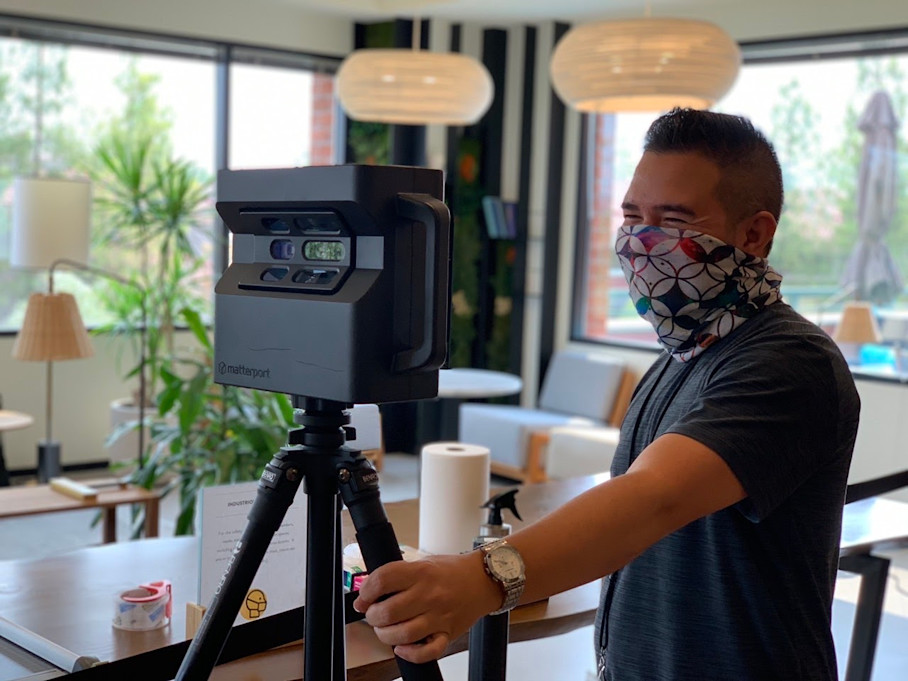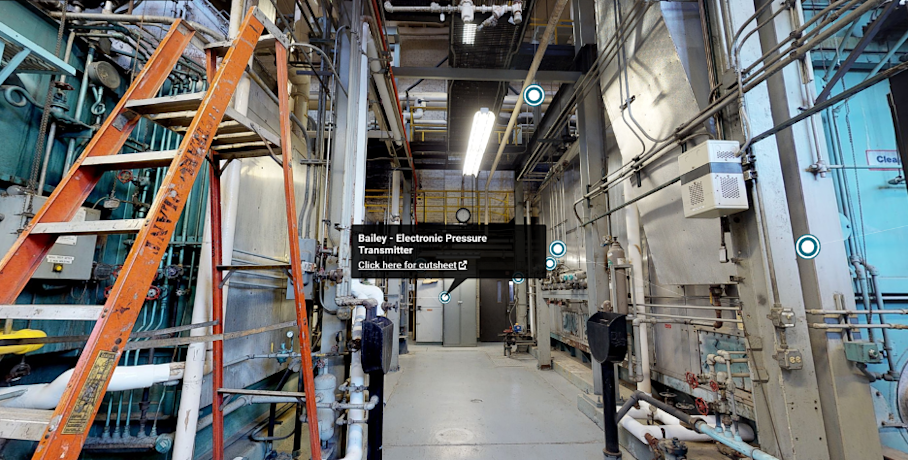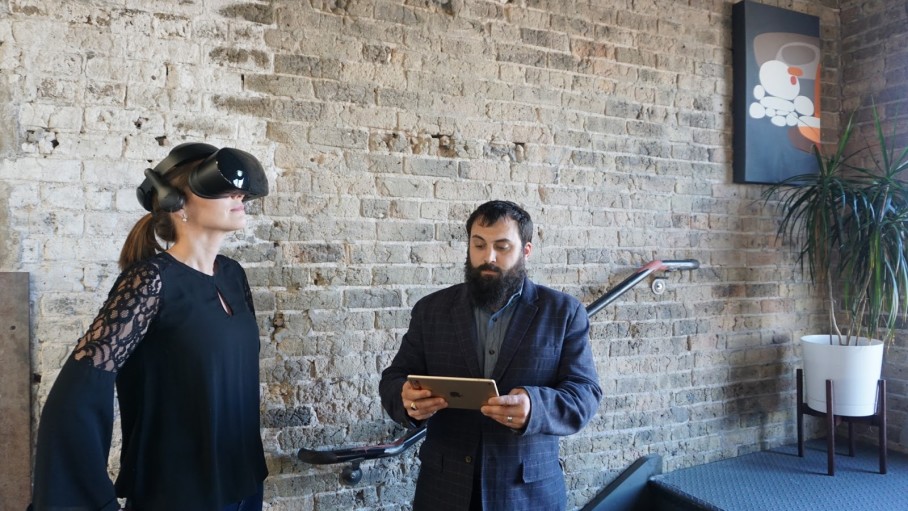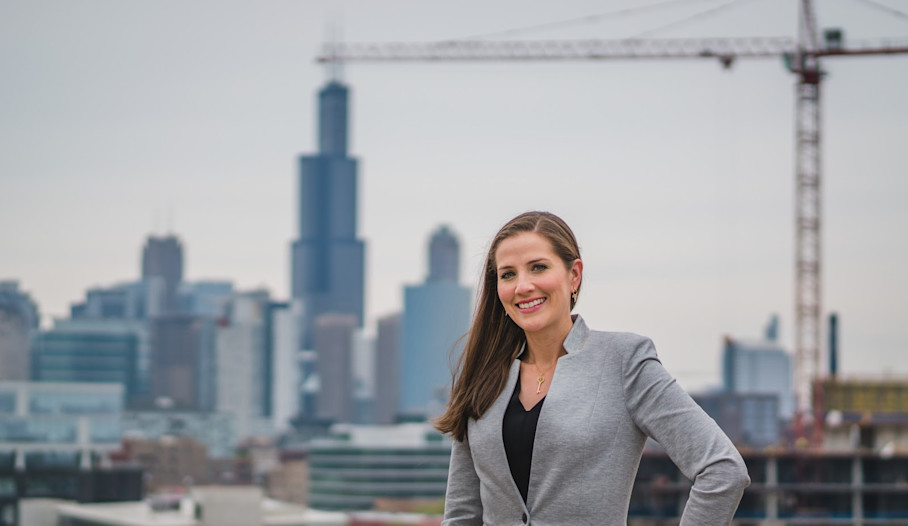Virtual Design and Construction is transforming the AEC Industry. And we’re excited to lead it.
Danielle Dy Buncio, co-founder and CEO of VIATechnik, is inspired by how technology is making a positive impact on the world, and attracting the next generation of female professionals
I'm a third-generation civil engineer. My grandfather, mother, aunt and father were all civil engineers, and I followed in their footsteps. My parents founded an infrastructure construction company when I was three years old, so I was immersed in the industry from a very young age.
Growing up in construction, I found that I loved the impact the industry had on the world, and the complex challenges that we could solve. So it was a natural decision for me to pursue a career in engineering and construction. I received my Civil & Environmental Engineer degree from Stanford University. After graduation, I worked for a large general contractor in Silicon Valley, where I worked on several sustainable corporate offices including for Adobe and Net App. I was fortunate to be able to later move to Australia, where I was a site engineer on a new building at Sydney University. I eventually moved back to Chicago and joined my family business leading heavy civil and marine construction projects, including most notably the Chicago Riverwalk.
I founded VIATechnik eight years ago, along with my husband Anton Dy Buncio, because we noticed the industry was in need of more rapid change. I felt like I could affect greater change by working with hundreds or thousands of companies, rather than just one.

VIATechnik is a virtual design and construction (VDC) consulting and implementation firm working across the project life cycle. Our specialty is digitizing the design, construction and operations of buildings and infrastructure. We’re based in Chicago with a total of 9 offices around the world in Boston, New York, Denver, Scottsdale, Portland, San Diego, Silicon Valley and Manila. We’ve been able to make an impact through BIM and VDC on mega projects around the country including LaGuardia Airport, Tesla Gigafactory, Apple Park, and Hudson Yards, and are very proud of our Matterport work at O’Hare Airport!
We collaborate with our clients through strategic consulting, implementation and development, and education and training. This often includes exploring their digital roadmaps, carefully assessing each company, identifying what each client needs and creating custom training to bridge any skill gaps in adopting a certain technology over the coming years. We also proudly offer a formal education component - Virtual Design & Construction (VDC) Certificate Program - through our partnership with the Center for Integrated Facility Engineering at Stanford University.
Pushing the Innovative Frontier
At VIATechnik, we’re all about really understanding our clients’ problems, goals, and how technologies align to solve them. The majority of our work involves integrating different commercially available technology, but we also build custom applications and integrations through our Cirrus Studio arm. We keep our finger on the pulse of what's happening in the architecture, engineering and construction (AEC). We're often early adopters of a technology in alpha or beta mode, helping spur wider industry adoption.
We’re always looking for what's out there, what's next, what’s needed – and how can we be early adopters staying ahead of the curve?
I'm a big fan of technology integration because it’s pretty rare to find one silver bullet solution, and innovation lies within these partnerships. While we use commercially available software, if we see a gap between the technology that’s available and our clients’ needs, we work to bridge that gap.
Affecting Industry Change with Matterport
After building countless digital strategy roadmaps for companies, we've realized we can affect the greatest change by pairing advisory and consulting with some level of implementation. This is where Matterport comes in.

VIATechnik helps owners, architects, engineers and contractors manage their businesses better through digitization of design, construction, and operations. We’ll create the 3D building information model (BIM) for our clients and love pairing that with virtual walkthroughs using Matterport.
The way we’re going to move the industry forward is by building a robust solution, and we love the Matterport approach. While the industry has been so rooted in the physical world – we know that virtual methods will be key to streamlining the way we plan and build the physical world.
We're going to help people make an impact on how they design or how they build.”
Matterport enables AEC professionals to work remotely and in a safe environment versus travelling to a job site. The amount of time and effort saved is tremendous. For example, if I had to travel to a job site in Arizona, it would take two days of travel time for a one hour site walkthrough. A Matterport 3D tour saves all that time and cost.

We document real time conditions for construction, capturing sites during and after construction to create 3D tours. While we at VIATechnik use Matterport heavily on the construction operations side, the technology can be integral across the entire project life cycle.
When COVID-19 hit, no one could be at the job site or only limited people could go into their facilities. The high fidelity visual information and spatial data provided by Matterport immediately validated for our clients that they had made the right decision by adopting 3D tours.
Now I see decision-makers questioning whether it’s necessary to physically go to a job site for a meeting – a Matterport 3D tour can provide the same level of information about the site to make decisions remotely.

Female Leadership in AEC
While the AEC industry may be dominated by men, as a woman joining the industry at a young age and rising to founding my own company, I pulled from the strength of my allies and I've been really inspired to see that there are allies outside of just the women that are trying to change it. That goes a long way.
I want younger girls to know that our generation is working so hard to make change for greater equality in the AEC industry. I am incredibly grateful for the women that came before me who worked equally hard or harder to change it for me.
At a young age, I remember having conversations with my mom or my aunt about sexism, stereotypes or women not being treated well on a job site. As a young girl thought: if you don't let it bother you, it's not going to bother you. If you don't allow for those comments, people aren't going to make those comments anymore. When I entered the industry, I realized that was so untrue. It's real.
But, while it might be easier to focus on the hardship of being in the minority group, there can be power in it. For example, if I go to a conference and I'm one of 10% of the room that's female, the chances I’ll be remembered are much, much higher than somebody else. I urge women to understand that when you show that you're capable and have interesting ideas, you will be heard. When you do that, you stand out, you’re very memorable.
There is a lot of power that can come from standing out – from being the minority – but it's not always easy.
Sometimes it comes up in surprising ways. For example, I had a conversation with someone interviewing for VIATechnik, and he like remembered me from a panel I gave three years ago. I thought to myself, “How many other people does he remember from that conference?”
The Importance of Role Models
Seeing my mother as the CEO of a construction company, along with my entire family – they were really great role models for me. I find that a lot of women who entered the industry had a role model, mentor or coach who inspired them to pursue a career in the AEC industry.
If you’re a young girl and you’re trying to figure out what you want to do with your life, civil engineering might not be something that’s been suggested to you – maybe you’ve never heard of it before. I want to tell you that construction is such an amazing way to make an impact on the world. I love being able to walk down the street and say, “Hey, I helped build that!”
Inspiring the Next Generation
I’m excited about the new ways in which we’re going to build our world in the future. The majority of our day is spent living and working and breathing in a built environment. Even when we think we're in nature, like a park, there are still some aspects of that environment that humans built. The fact that we have such a great influence on the world is really important.
From an environmental or climate change perspective, construction is one of the largest producers of waste. If we can figure out how to complete projects with less waste, we're making an impact on the entire world.
I see the impact that the built environment has on every single person's daily life – it's so powerful. I want to inspire the next generation of builders, especially women.

